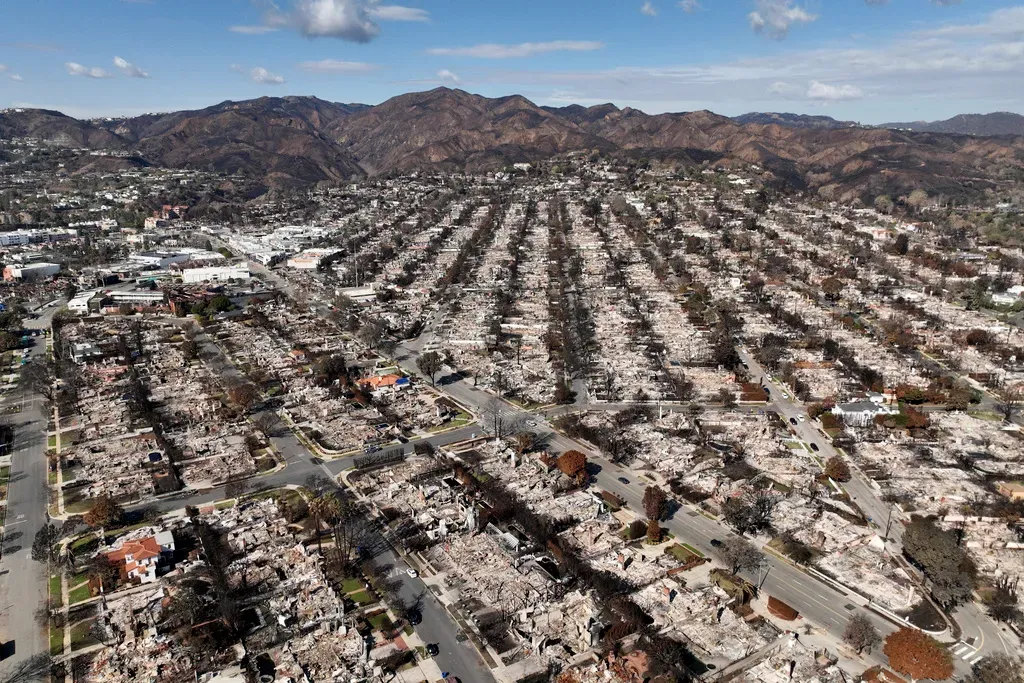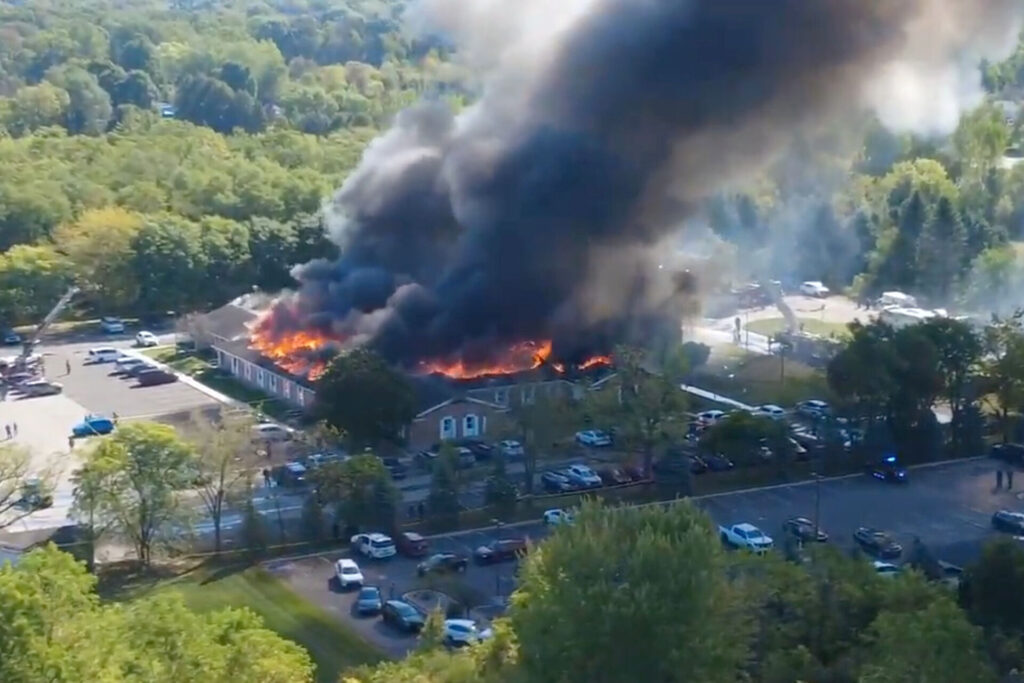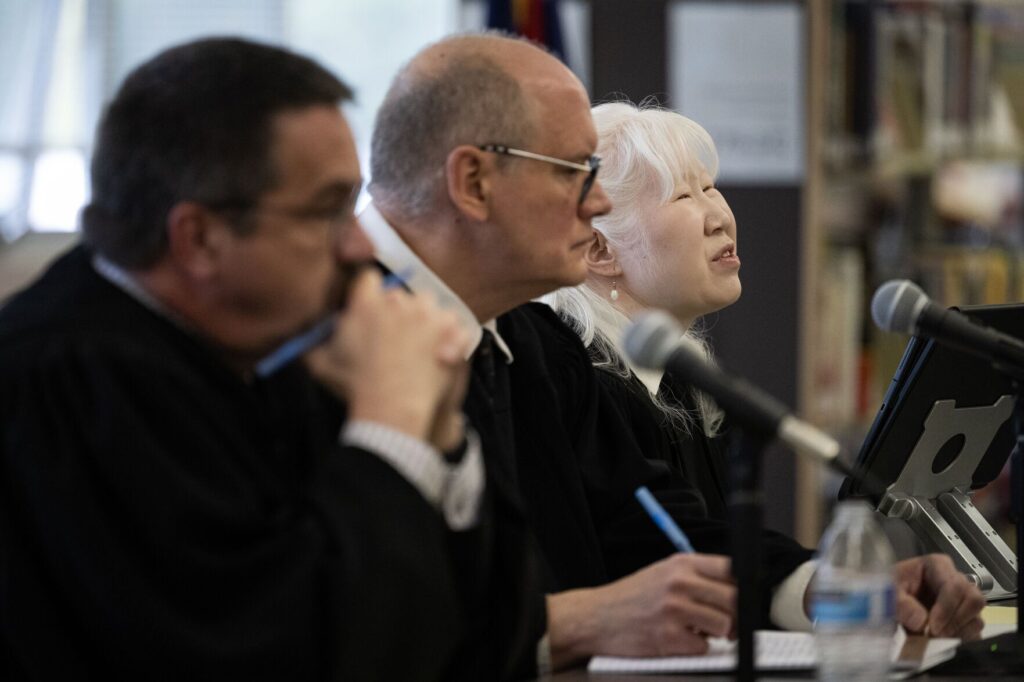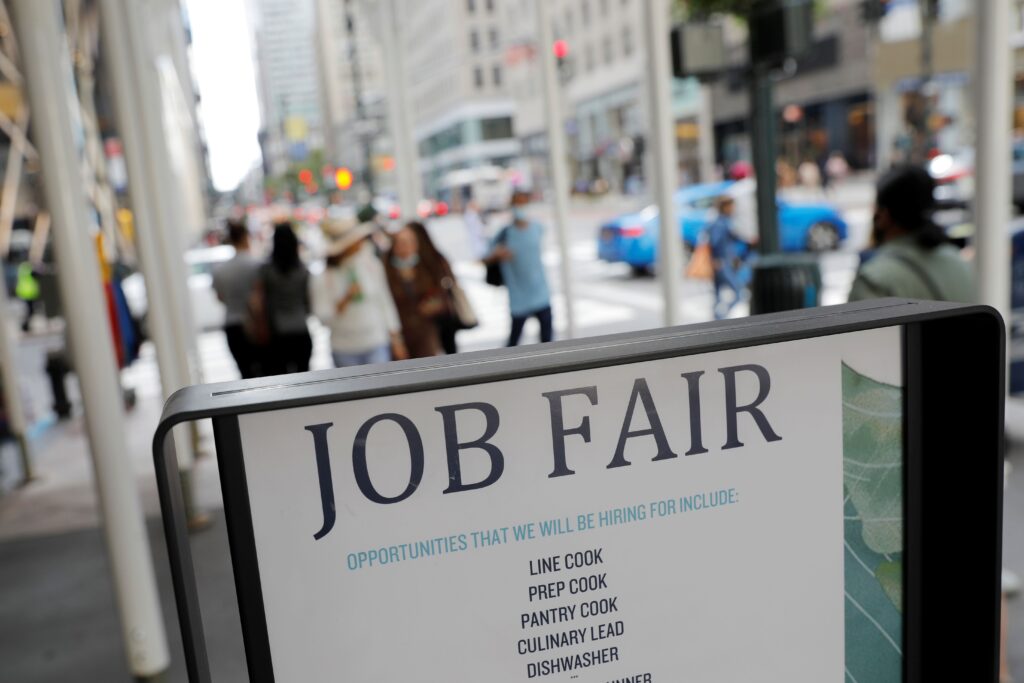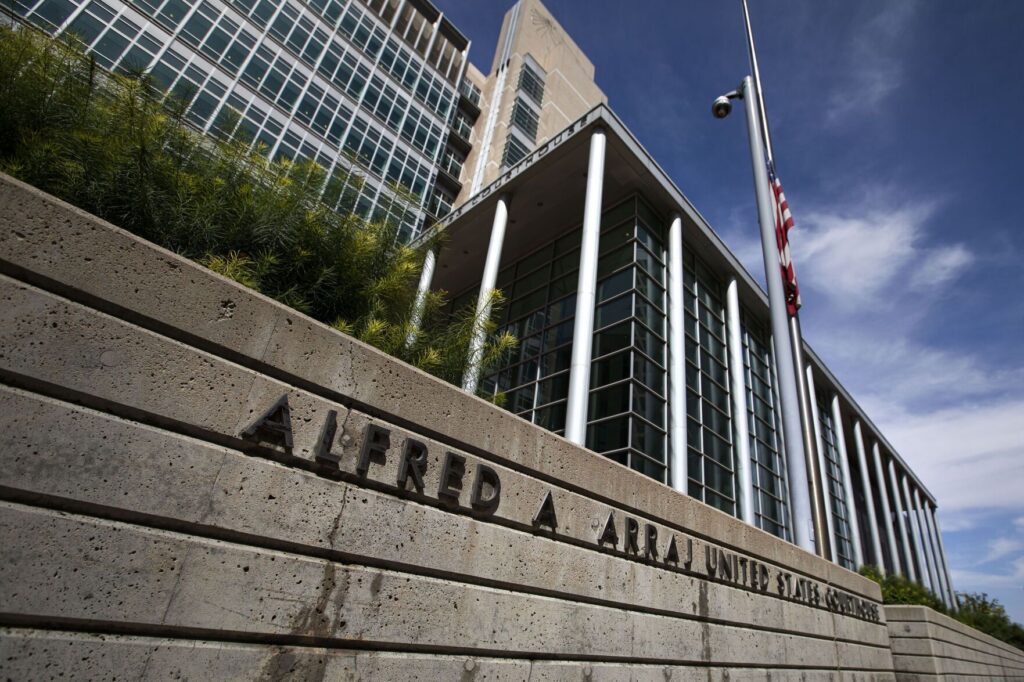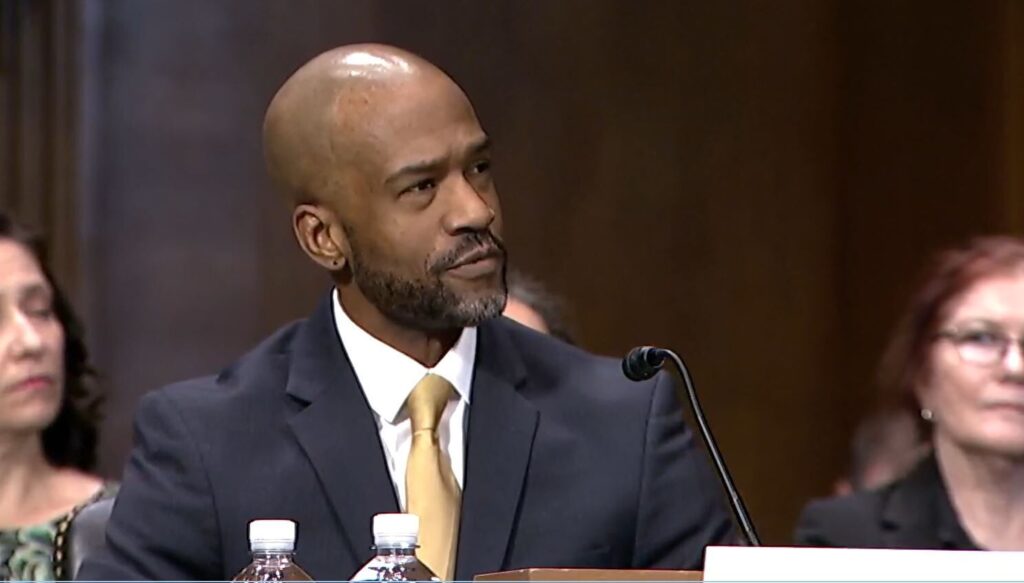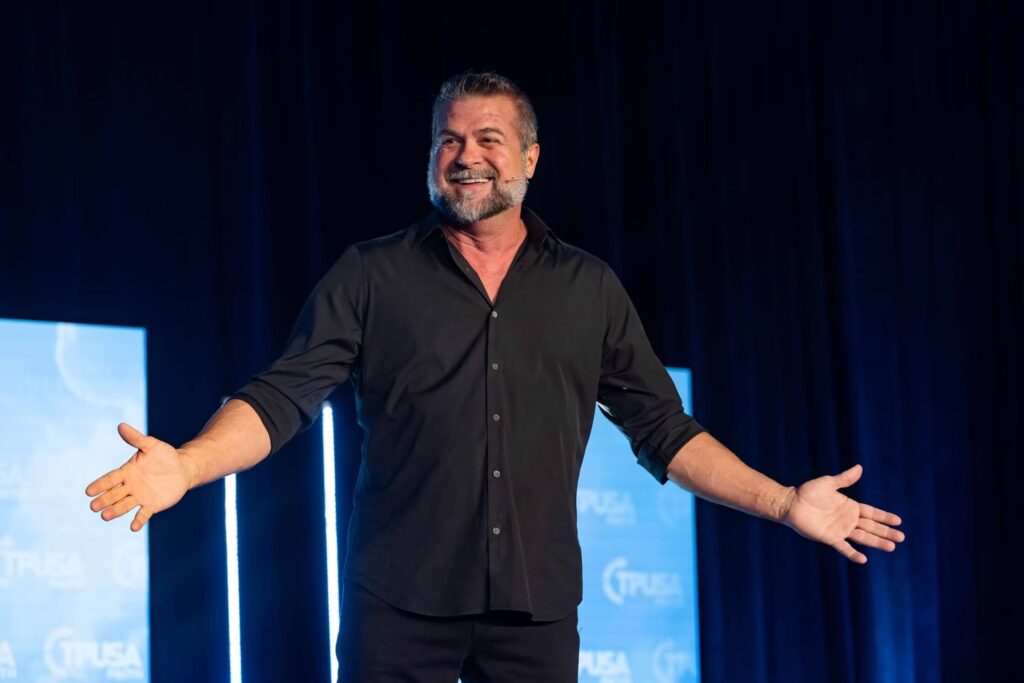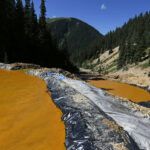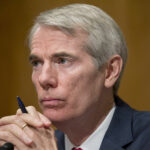Sand Creek Massacre Capitol grounds memorial plan moves forward
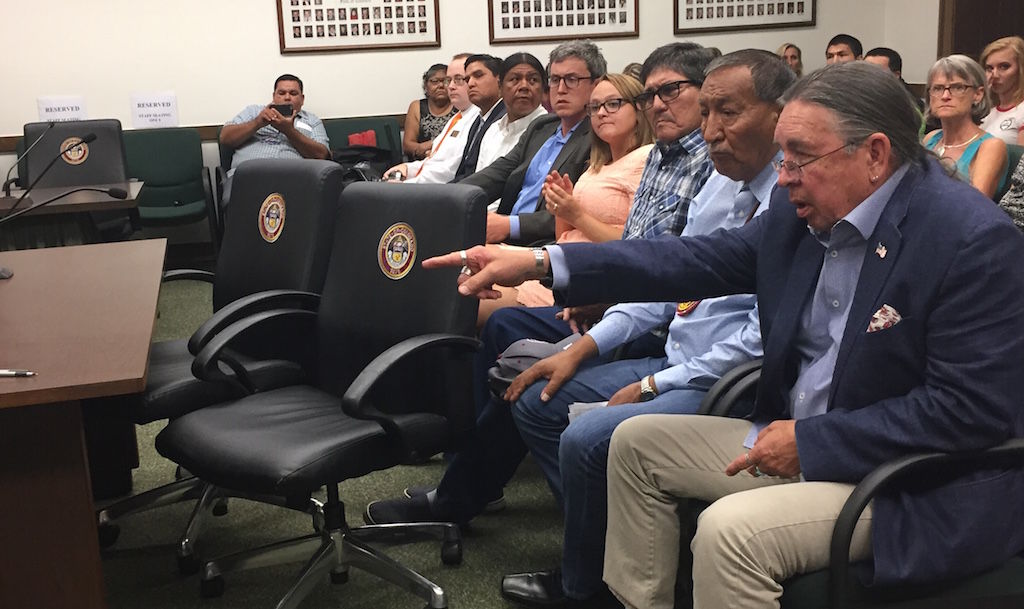
State officials on Friday advanced a plan to site a new memorial to the 1864 Sand Creek Massacre on the grounds of the Capitol in Denver after more than an hour of emotional testimony delivered mostly by members of regional Cheyenne and Arapaho tribes. The proposal won unanimous support from the 12-member Capitol Building Advisory Committee.
The memorial would feature a traditional symbol of the massacre – bronze teepee poles fitted with an American flag and a white flag of truce – the same flags flown at the original Sand Creek camp. At the center of the site would sit a life-sized grief-stricken survivor frozen in the immediate aftermath of the battle sculpted by Harvey Pratt, a descendant of one of the Sand Creek victims. The site would also include a footprint-strewn path referencing fleeing survivors and their ancestors.
“I’m here to support the memorial as a past state senator and a member of the Comanche tribe in Oklahoma,” said Suzanne Williams, a Denver-area Democrat who served in the Colorado state House and Senate. “I believe it’s vitally important to establish a record of what happened.”
“Have compassion in your hearts for us,” Henry Little Bird told the committee. “We have struggled in the past; we struggle in the present. But what happened (at Sand Creek), is not very far from me.”
It was a theme touched upon again and again at the hearing – the conviction that the events of Sand Creek live on today, whether we acknowledge them or not, that the past isn’t confined to the past, and that remembrance would make a positive difference in the present and the future.
It’s an argument that threads through the works of Colorado State Historian Patty Limerick, who also testified at the hearing in support of the memorial. In a column published in The Denver Post three days earlier, she elaborated on the idea.
“The forced relocation of the Cheyenne and Arapaho people to Wyoming, Montana and Oklahoma has made it possible for the current residents of the Front Range to forget the history of the dispossession of the tribes,” she wrote.
“(But) the Sand Creek Massacre was not an isolated misfortune. It was a founding episode in the history of Colorado, and an event of great consequence and significance for the nation as a whole. Nonetheless, the descendants of the people attacked at Sand Creek are very much alive, and this act of remembrance matters deeply to them.”
A man named William Robertson was the sole witness to testify against the plan. He argued that siting the memorial on the Capitol grounds would be a mistake. He warned the committee members that they were risking falling into the “error of presentism,” which he said would pull the massacre out of context by “putting our values onto the people of the past.”
Robertson mentioned debate that erupted this year around the Confederate flag and protests at top universities such as Yale, where students called on administrators to rechristen a campus residential college named after 19th-century Yale valedictorian John C. Calhoun, the white supremacist South Carolinian whose work heavily influenced the Civil War secessionists.
“You have an obligation to the (European) settlers,” Robertson said. “I think presentism and distortions of history have gone too far.”
“There were white scalps found at Sand Creek,” he added during an exchange with committee member David Halaas, a former Colorado state historian who has studied Sand Creek for years.
“Oh, get out of here,” Halaas said, shaking his head.
In its proposal outlining the plan for the memorial, One Earth Future Foundation – the group that has spearheaded fundraising for the effort – celebrated the kind of debate the memorial might fuel.
“As recent events around the Confederate flag at other state capitols suggest, the public is finding increasing value in acknowledging the complexities of the past,” the proposal authors wrote.
Originally proposed for a hilly site just north of the Civil War memorial outside the grand west entrance of the Capitol, an alternative location for the memorial gained support Friday. Committee members offered to place it on a stretch of flat earth across Lincoln Avenue near the Colorado Veterans Memorial.
“The new proposed location is far from a deal breaker,” One Earth spokesperson Debra Havins told The Colorado Statesman after the hearing. “Some of the supporters actually think it’s a better spot. It might draw more attention there.”
The plan now heads to the Capital Development Committee for approval. It must then be voted on by lawmakers during the 2017 legislative session.



